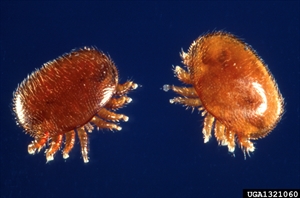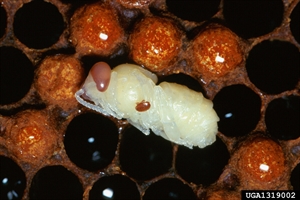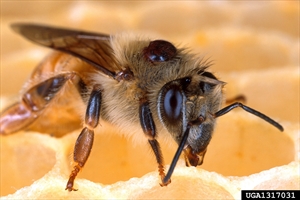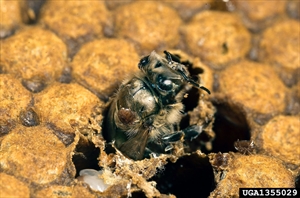- Worldwide distribution. On European and Asian honeybees. Important.
- Infestations cause: (i) empty brood cells - infested larvae removed by workers; (ii) weak bees that spread the mite as they rob food from nearby hives; (iii) spread of virus and bacterial diseases; (iv) crippled bees, prone to infections; v) death of colony in 1-3 years.
- Adult females, reddish-brown (males white), flat, oval, up to 1.8 mm long, 2 mm wide, on the thorax or in abdominal folds. Mites enter brood cells, lay eggs, nymphs feed on bee larvae and pupae, mate, males die, and females attach and feed on bees. See full fact sheets for monitoring.
- Spread: (i) within hive - they are mobile; (ii) infested bees enter nearby hives to rob nectar, or by mistake; (iii) swarming; (iv) infested combs put in healthy hives.
- Cultural control: use open-screen floor hives; avoid using combs from brood area in honey area; hygiene: (i) queen bees and equipment from trusted sources; (ii) clean and sterilise borrowed, second-hand equipment, tools, gloves, pallets, boxes; (iii) inspect brood combs regularly; (iv) replace brood combs every 3 years.
- Chemical control: see full fact sheet for details of treating hives, equipment, and mite infestations on bees.








